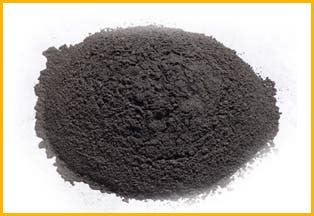By doping graphite, researchers in Germany have reported that they found tantalizing hints of superconductivity at room-temperatures and far above, like water boiling point (100°C.). Superconductivity is a property which describes zero resistance electrical conductivity, however this property has only been observed at temperatures lower than -100°C.
Graphite has been found to exhibit superconductivity in the past, when doped with elements that provide additional free electrons. For instance, calcium doped graphite superconducts at up to 11.5 kelvin (about -260 °C), while 60 kelvin could be reached if enough free electrons were made available.
With this in mind Pablo Esquinazi and his colleagues at the University of Leipzig sought to bend the superconductivity limit. Their first attempts rendered some very interesting results with an artificial type of bulk graphite known as pyrolytic graphite, which they managed to superconduct at 100 kelvin. They found that electrons concentrate in high density at the interfaces between neighbouring thin segments of graphite. Graphite an allotrope and most stable form of carbon, is made up of layers of carbon atoms arranged in hexagonal lattices, and is considered a very good electrical conductor.
For their next attempt, the researchers took a hit a carbon powder, which they mixed with water. Thus, they placed 100 milligrams of pure graphite powder made up of flakes a few hundredths of a millimetre long and tens of nanometres thick into 20 millilitres of distilled water. After mixing, the powder was filtered and dried. When the sample was magnetized, the scientists observed that the sample continued to remain magnetized even after the magnetic field was removed. This is either a characteristic of superconductivity or ordinary ferromagnetism.
To rule out the latter, the scientists probed how the magnetization varied with the strength of the applied field and with temperature. Their results were on par with the first high-temperature oxide superconductors, discovered in the 1980s.
Now, no actual zero resistance electric conductivity was proven, nor did the researchers show that the magnetic fields are absent from the interior of the flakes — a fundamental characteristic of superconductors. However, what’s interesting though is that this apparent superconductivity wasn’t lost at very high temperatures. The team reports that the superconducting state remained at temperatures up to about 400 kelvin, or around 130 °C, well above the boiling point of water. Even Esquinazi admits that the claim “sounds like science fiction”, nevertheless their findings are extremely interesting and later scrutiny of the results should prove to be even more interesting. If indeed doped graphite powder is found to superconduct, than the ramifications of this scientific find would be enormous.
The report was published in the journal Advanced Materials.
source: Nature










